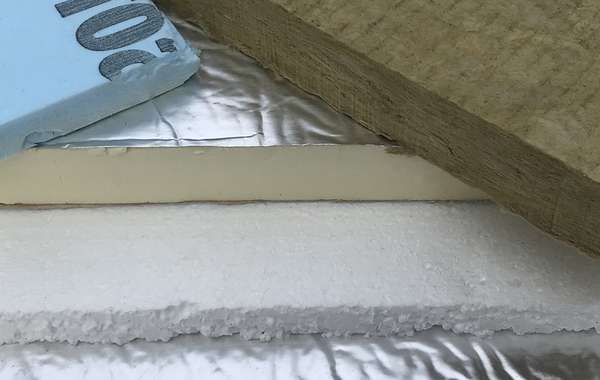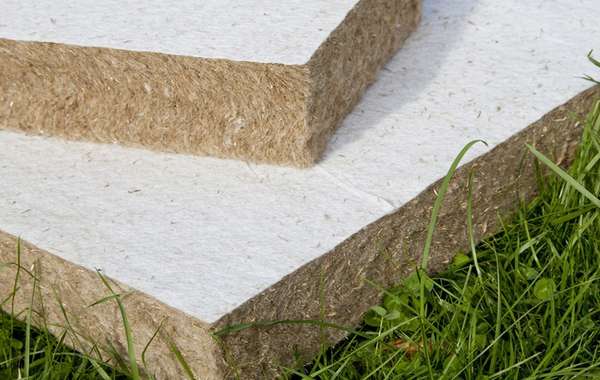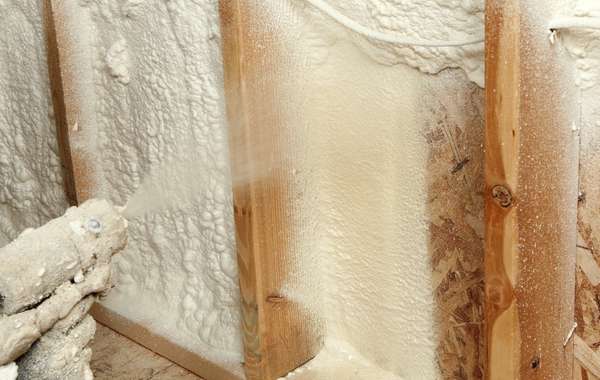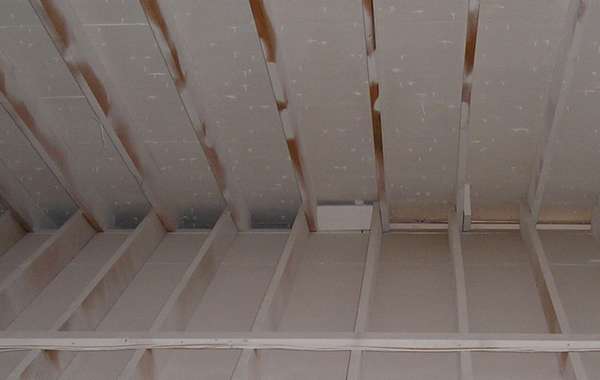Halo Exterra rigid exterior insulation - has anyone work with it?
Hi I'm wanting to add insulation to the exterior of my home as I am planning to replace siding was considering rockwool comfortboard but this Halo product was sugested by my local supplier. Has anyone work with it. The manufactures claims its better than slice bread but don't they all.
Any thoughts would be greatly appreciated
Cheers

























The best way to insulate the exterior of a house has a lot to do with what is going on inside the walls, and how extensive your energy-efficient renovations will be. The following page will help you understand some of the risks and find the best way forward -
The easiest way to insulate walls from the exterior in older homes
But to speak to the products you mention - Rockwool isn’t the cheapest, it also isn’t the highest R value, but it’s a workhorse of an insulation product that can safely be applied to most exterior walls for the main reason that moisture moves right through it, so you won’t accidentally be trapping moisture inside walls. It is also hydrophobic, meaning it is very resistant to moisture and water damage.
There are many ‘all-in-one’ insulation products on the market, Halo rigid panels seem similar to many others, and most of the ones we see work very well when applied properly and in the proper place. The most common reason that a good product can cause a wall failure is by putting it in the wrong place.
The safest advice we can give you is to learn the science behind walls so you can choose wisely. There are some rigid insulation panels with air barriers, vapor barriers, some with none and some with both. In cold climates you want vapor barriers on the interior, so you need to be careful not to apply a vapor-impermeable panel to the outside.
On the Halo website they speak of 'breathability' of the Exterra product, so that's good, though it would be nowhere near as breathable as Rockwool.
Choosing the best exterior insulation will also depend on your climate, so if you tell us your climate zone (or closest city) we may be able to offer a bit more insight. In the meantime, here are a few more pages that will help you find the best option.
Hi Mike
I live an hour north of Winnipeg on lake Winnipeg. It's a family cottage build in 1927 which I now live in year round. there plus R40 in attic and heat crawl space below. The walls are wood chips and some fiberglass where walls have been opened. The siding needs to be replace so was plannin to put Tyvek then two layers of Rockwool comfort board 11/2" with furring strips for a rainscreen and then vinyl siding. The vinyl siding is not my first choice but it is what I can afford.
After this the heat crawl space will be encapsulated and more insulation added to existing.
Any sugestions?????
Cheers thanks for your time.
Also I have read all of you posts on wall insulation very informative.
Hi George, Winnepeg is far from a balmy climate in winter, and if I'm reading that right you're planning on 4 inches of EPS, correct? That's good to hear if so, that's not overkill at all.
The thing about EPS insulation, is that a 'little' on the outside (like 1 or 1.5 inches) can be problematic, but several inches stops being a problem, as it starts acting like a SIP wall (structural insulated panel), and the foam itself is the vapour barrier. So if your plan was either 4 inches of Rockwool or 4 inches of Halo rigid insulation, I'd be less concerned that if you were only putting 1 inch of Halo.
If you go with Rockwool then I imagine the Tyvek is your air barrier right? Tape it well!
Here is another page that may be of value, it's about air barriers and vapour barriers. Glad you're finding value in our pages, hope this all helps!
The Difference between air barriers and vapor barriers
Hi Greg,
Foam panels will act as at least a bit of a vapor retarder, if not an impermeable vapor barrier. And the foil on foam panels would quality as impermeable, even more so than 6 mil poly vapour barriers. If you install 1 or 2 inches of foil faced rigid insulation on the exterior it will inhibit moisture from escaping to the exterior, but it may still be cold enough that moisture will condense. If exterior rigig panels are thicker, they still block moisture but the interior surface will be warmer, so it reduces the chance of condensation forming.
This is a 'best practice' tip, but frankly most of the building industry in colder climates does it anyway so you're in good company. It isn't a catastrophic mistake (as some other things in building code are), but all these things ad up. Certainly in Canada it's happening in most places in order to meet code when you're framing a 2x6 wall and using fiberglass batts. This page about choosing between OSB and Plywood for exterior sheathing explains it at greater length, hope that helps.
For anyone that has the option to make a change, using mineral wool / Rockwool rigid insulation is a way to meet code insulation requirements in building code without increasing the risk of trapping moisture in walls, since moisture moves right through it.
This is great info. On a similar note, we are reno'ing a 2x4 1969 built bungallow and furred out the widows 2" with plans to add 2" rigid board. We got a decent deal on spray foam so put that in The walls and wondering if that affects what we should use on the outside. We are in calgary, similar to Winnepg
I don't quite understand Candi, to clarify - did you fur out the entire exterior walls and blow a layer of spray foam onto the entire exterior wall surface? happy to help sort it out for you I'm just not sure what you've got going on there. Are you asking what sort of siding to put on after spray foam?
Hi, Greg: My understand of Halo Neopor is that it is highly vapor permeable, not quite as much as rock wool, but more than EPS/XPS and way more than any foil faced panels. I consider rockwool and Neopor interchangeable in terms of vapor movement.
Halo has a permeable facer.
Hi George, did you go with Halo in the end? If so, what did you think of it? I am considering using this for my home.
Wondering the same?
Hoping a new comment might invigorate this older HALO post with new discussions....
Building our forever home, new construction in climate zone 4Marine (Portland, Oregon) and planning 2x6 structure(R23 BIB fiberglass), ZIP sheathing (air barrier), HALO 1inch (R5) continuous insulation... and then a 1x3 rainsreen and some Hardie lap siding.
So, the ZIP sheating is warmed by the R5 HALO but you always want some venting incases of low temp condensation. This structure is designed for 30F (ASHREA 99) but we get 20F on occasions. The Halo specification is 1.32 perm allows for drying to the exterior. The Halo skin is perferated and falls into the class 3 vapor barrier but it's closer to a class 2 vapor barrier (> 0.1 perm and less than 1 perm) IMHO.
I initially planned a vapor open assembly (1.5" rockwool at R6.1) but rockwool is currently on alocation and not available in Feb 2024. Plus the demand of Rockwool has driven the price point to $1.5 psf and HALO is $0.65 psf in my location. So, this seems like a no-brainer for choosing HALO....
My two hesitations are first; when hanging concrete siding on the 1x3 furring, will the 10psi compressive resistance of GPS be sufficient to prevent racking in some weird way. And second, is the 1.3 perm specification real world accurate. I want to ensure drying to the outside and loved Rockwool for being vapor open.
So, any takers on these techie questions? Maybe just someone with real-world HALO experience to give their impressions as a continuous insulation layer. Many thanks